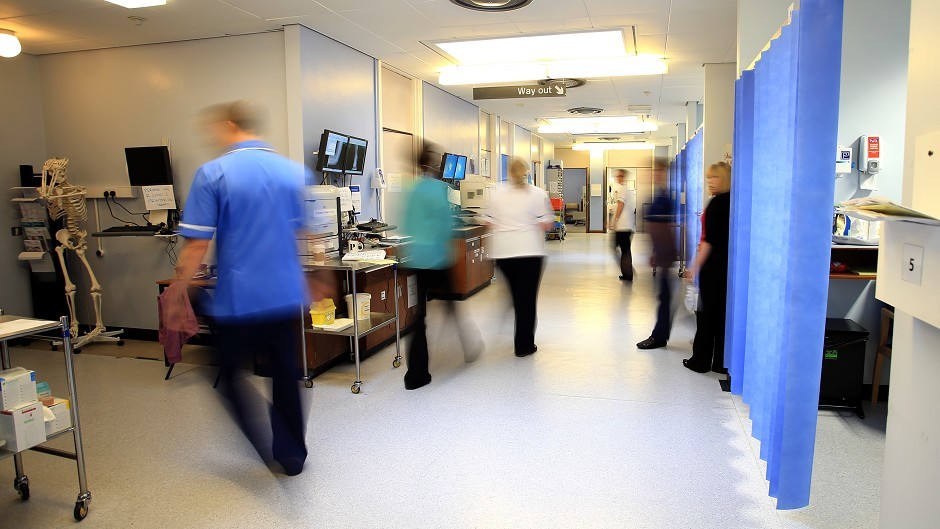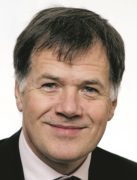In many ways, 2018 has not been the best year.
But it has harboured one joyous milestone: the 70th anniversary of the foundation of the NHS.
Yet whilst we celebrate this jewel of the British way of life it has also been a year when the sustainability of this method of delivering our healthcare has been questioned. Beset by spiralling costs and staff shortages, where do we go next?
In the north of Scotland this has become especially evident in rural areas. We know from the press that Moray, Caithness, Skye and Argyll are struggling to deliver the care we have come to expect.
What is less known is how, over one hundred years ago, a previous crisis in health care provision led to the very creation of the NHS.
In 1912 health care was very different. In towns and cities doctors were able to maintain viable medical practices from private practice and most hospitals were funded by public subscription. But the crofting counties were in crisis and so a commission was set up, chaired by Sir John Dewar, to investigate. This group toured seventeen of the remotest communities of the Highlands and Islands and their resulting Dewar Report startled and horrified politicians.
Beset by poor transport and rural poverty, many people had no meaningful access to health care, with the new National Insurance Act often only covering the doctor, teacher and minister. Many communities were unable to support a doctor’s salary. In Ross-shire in the ten years previously, 47% of deaths went uncertified, rising to over 80% in some parishes.
The Dewar Report was published in December 1912, detailing how poor living conditions led to bigger problems with infectious diseases such as tuberculosis and diphtheria. Provision was unplanned and random, often reliant on individual and haphazard charitable donations. The report details the barriers to doctors settling in rural areas, such as lack of housing, poor pay and fears for the opportunities for their family.
But it also made a revolutionary recommendation: a state funded service should be set up in these areas. This was much influenced by the evidence supplied by Dr Lachlan Grant, a GP in Ballachulish. He had seen how the “medical club” in existence for the slate quarry workers there had allowed the provision of a doctor and he exhorted that this model could be expanded to the whole population, at reasonable cost and to great effect.
The following year, the Highlands and Islands Medical Service was established as the world’s first state-funded comprehensive health service. After a shaky start, more and more doctors and nurses were appointed and by 1936 the Cathcart Report stated: “This service has revolutionised medical provision in the Highlands. It is now reasonably adequate in the sense that for all districts the services of a doctor are available on reasonable terms.”
Other areas of Scotland looked on with envy. Lanarkshire petitioned for a similar service. Muriel Ritson, administrator for the Highlands and Island Medical service was invited to sit on the Beveridge Commission and when the NHS White Paper was published in 1944 it was the only model quoted as an example of how the NHS would work.
So, a model designed to deliver healthcare to the remotest areas of the UK was the blueprint for the NHS as we know it, and has become central to the British identity. Healthcare outcomes are envied across the world and it is still seen as the most cost-effective of health services. This is a legacy of which we should be proud and Dr Grant’s vision should be celebrated. Populations in the remotest areas are right to demand reasonable access to basic healthcare and should demand better when solutions from urban areas lead to sometimes catastrophic gaps in services.
The Dewar Report also called for better use of technology. Back then it was the internal combustion engine and the telephone. Now we grapple with improved broadband and mobile data. These will not replace face-to-face care, but just as the telephone supported previous generations, digital technology will allow access to better specialist advice to these locations.
We need a renewed generation of doctors, nurses and others with multiple roles, embedded in communities. These individuals will be true lifesavers to these populations but will also have the skills to care for people with the complex multiple problems, which increasingly result from our lengthened life expectancy.
In 1912, communities were shrinking as people left to seek a more secure and safer life elsewhere. One hundred years later these same communities face further depopulation if they are not confident in a basic level of healthcare. This must not happen. Small rural communities have never had more opportunities, especially as we look to the renewable energy that is so abundant here.
With the right support and vision, solutions that are developed and refined in the remotest areas have the potential to again provide the blueprint for new models. Perhaps in the future, other less rural areas will again petition that they are rolled out more widely and as a result, like Lachlan Grant’s initiative a hundred years ago, a reinvigorated NHS will be in place to face the new challenges of our times.
Dr Miles Mack is a GP in the Highlands and the former chair of the Royal College of General Practitioners Scotland

